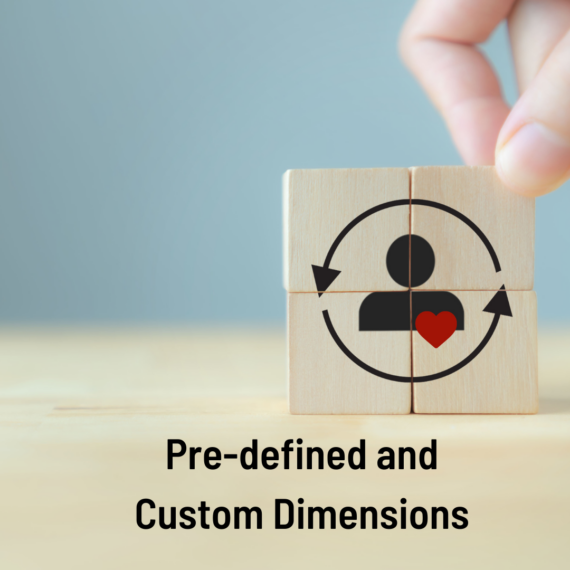Google Analytics 4 Audiences are Rolled Out on Google Ads
Right Shout
In Uncategorized Posted December 08, 2023
With the latest updates from Google, marketers are poised to gain a significant edge in audience targeting and data analysis. Google Analytics 4 (GA4) has introduced a slew of new dimensions to its audience builder, segment builder, custom reports builder, and data API. This integration is a game-changer for digital marketing, particularly in how GA4 audiences can now be seamlessly created and applied directly within Google Ads.
1. Audience Manager Feature in Google Ads
The introduction of the Audience Manager feature within Google Ads marks a crucial step in digital marketing. Marketers can now build Analytics audiences, including predictive audiences, during the campaign creation process. This feature not only simplifies the workflow but also enhances the precision of targeting.

2. The Power of Predictive Audiences
Predictive audiences are defined by at least one condition related to a predictive metric. For example, an audience named ‘likely 7-day purchasers’ would consist of users predicted to purchase in the next 7 days. This foresight allows for more strategic and focused marketing efforts.

3. New Dimensions in GA4

GA4’s rollout includes additional dimensions across various features:
Audience Builder: Enhances audience segmentation.
Segment Builder: Allows more detailed user segmentation.
Custom Reports Builder: Facilitates the creation of more nuanced reports.
Data API: Expands data manipulation and integration capabilities.
These dimensions, which include both pre-defined and custom item-scoped dimensions, provide deeper insights into data, such as user locations, transaction IDs, and more.
4. Understanding Pre-defined and Custom Dimensions

Pre-defined Dimensions: These are readily available dimensions like age, country, and browser, which do not require additional coding for data collection.
Custom Dimensions: These enable tracking and reporting on specific user details and interactions that are not covered by pre-defined dimensions.
5. Item-scoped Custom Dimensions

Google’s addition of item-scoped custom dimensions to GA4’s tools allows for more detailed descriptions of products or services sold online. These include dimensions like Item ID, Item Name, Item Brand, and various Item Categories.
Conclusion
The integration of Google Analytics 4 with Google Ads marks a significant advancement in the realm of digital marketing. These tools empower marketers to understand their audience better, make smarter decisions, and tailor their strategies for optimal performance. The addition of new dimensions and predictive audience capabilities are set to revolutionize how businesses connect with their customers online.
FAQ
Q1: What is Google Analytics 4 (GA4)?
A1: Google Analytics 4 is the latest version of Google’s analytics tool, designed to provide more comprehensive and granular data about website and app traffic. It offers new features like improved machine learning, better integration with Google’s marketing products, and more detailed user tracking.
Q2: How are GA4 audiences different from previous versions?
A2: GA4 audiences are more dynamic and flexible, allowing for deeper segmentation based on user behavior and predictive metrics. This means you can create audiences based on predicted future actions, like purchasing likelihood, not just past behaviors.
Q3: What does the integration of GA4 audiences with Google Ads entail?
A3: This integration allows you to directly use the audiences created in GA4 within your Google Ads campaigns. This seamless integration means more accurate targeting and the ability to leverage predictive audiences for more effective ad campaigns.
Q4: What are predictive audiences in GA4?
A4: Predictive audiences are groups of users identified by GA4 as likely to perform a certain action in the future, like making a purchase or churning, based on their online behavior patterns and machine learning algorithms.
Q5: What new dimensions has GA4 added, and how do they impact Google Ads?
A5: GA4 has added new dimensions, including item-scoped custom dimensions, which allow for more detailed descriptions of products or services. These dimensions can be used to refine audience targeting in Google Ads, leading to more personalized and effective advertising.
Q6: What is the difference between pre-defined and custom dimensions in GA4?
A6: Pre-defined dimensions are standard metrics available in GA4, like age, gender, or device type. Custom dimensions, on the other hand, are metrics that you can define based on specific data points relevant to your business, offering more tailored insights.
Q7: Can existing Google Analytics audiences be migrated to GA4?
A7: Migrating existing audiences from previous versions of Google Analytics to GA4 requires some adjustments due to the differences in data models. However, many concepts and segmentation criteria can be recreated in GA4.
Q8: How will the integration of GA4 with Google Ads improve ad performance?
A8: By leveraging the detailed and predictive data from GA4 in Google Ads, marketers can create more targeted and efficient campaigns. This leads to better ad performance through higher engagement, conversion rates, and ROI.





